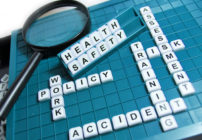Pain isn’t a particularly pleasant topic. But it’s something that affects millions of people all over the country, whether it’s end-of-life, PMT, MS or backache. The good news is that there is a lot that you can do to overcome physical pain and get on the road to recovery. Here are some expert recommendations to reduce pain and get back to living your life the way that you want to.
Spice Up Your Diet – Literally
People have been using food as medicine for thousands of years to cure various ailments. But now, according to Patrick Holford, author of nearly a dozen best-selling books on diet, the science is catching up. You can use food in all sorts of ways to reduce pain, but one of the most effective, he says, is to use curcumin – the active ingredient in turmeric. Curcumin, he says, is one of the most powerful natural anti-inflammatories that you can eat. It’s incredible at reducing joint pain caused by inflammation and also reducing other symptoms that result from a toxic body. He also recommends other plant foods like flax seeds, walnuts, cranberries and citrus which all help to reduce inflammation. According to Holford, many of these foods are as effective as pharmaceutical drugs, but without the debilitating side effects.
Get Professional Help
One of the objectives of palliative care nursing is to provide pain management, through whatever means possible. Even if you’re not at the end of your life, you can still use many of the techniques that the experts use to help older people avoid suffering too much in their final weeks and months. One way is to listen to music. It might not seem obvious, but the Cleveland Clinic recently found that listening to an hour of Lady Gaga every day helped to reduce pain and depression experienced by its patients.
Move Around More
It’s very easy when you’re in pain to make excuses to stay in bed or on the couch all day. (And if you’ve broken your leg, then these excuses are valid). But if you can move about, it’s a good idea to get up and go outside and take some exercise. According to psychologist Sal Fichera, letting your body become habitually inactive accelerates its degeneration. That’s why she argues so forcefully for people to move about, regardless of their pain. Low levels of physical activity lead to things like lower bone density and higher levels of depression. Exercise, on the other hands, helps to strengthen joints and lifts mood.
Try a therapeutic massage or Yoga
There’s a lot of healing power in human touch, and a deep-tissue massage that is therapeutic, can help alleviate some of your pain. These days, there are several massage options available, hot-stone therapy, swedish, and more. The therapeutic massage oil helps relax tight muscles, reduce inflammation (pain and swelling) and soothe the nervous system. In fact, it will ease the pain of just about any part of you! Also try relaxing Yoga poses every day – they will help get you pain-free in the long run, and also increase your body’s ability to manage pain better.
Imagine Being Pain-free
Pain is a subjective experience: it’s something that is created in our brains. As a result, some people have experimented with ways of shutting it down when it is no longer useful. Obviously, it’s helpful to feel pain when you put your hand on the hotplate on your stove: keeping it there would damage your hand beyond repair. But some pain, like joint pain, is pointless. James Gordon, a medical entrepreneur, says that deep breathing combined with visualization can take pain away and leave you feeling in a state of bliss.
Related Posts
- Four Ways To Take Better Care Of Yourself
No matter how old you are, it’s important that you take your health seriously. However,…
- 4 Ways To Live a More Carefree Life
It might not be in your nature to go about living your life fun and…
- 3 Easy Ways To Boost Your Confidence
Most of us struggle with our confidence from time to time. It might feel like…



















